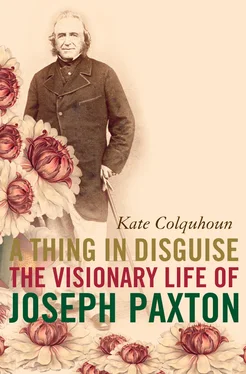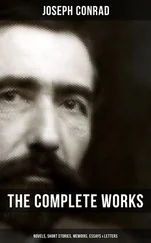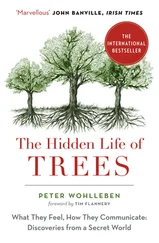On 17 May 1810, aged 50, Joseph Paxton’s father William, a farm labourer, was buried there three months before Paxton’s seventh birthday. The boy’s family were now poorer than ever. Later in life, when he was wealthy and enjoying a fine dinner, he is said to have remarked, ‘you never know how much nourishment there is in a turnip until you have had to live on it’.
There are few documents relating to the early years of Paxton’s life. It has been suggested that his father was a tenant farmer, rather than a labourer – the disparity in incomes of the two positions was not slight – but his name does not appear in any of the rent books for the Woburn Estates, nor is there any mention of him in the land tax records for the area. William may have farmed his brother’s land or he may have laboured at Battlesden Park, where two of his sons subsequently became bailiffs. Whether he farmed or laboured, he worked on land in a county famed for market gardening, where smallholders cropped wheat, barley and some oats.
Joseph Paxton had been born on 3 August 1803, the seventh son and last of the nine children of William and Anne, who had moved to the village by the time their fourth child was baptised. His parents had been married for about 22 years, and both were in their early forties. By 1803, their eldest child – also William – was twenty and soon to be married and it is likely that five or six of the other children still lived at home. They were John (16 when Paxton was born), Henry (14), James (11), Thomas (9), Mary Ann (7) and Sarah (about 3) – all packed into a small labourer’s cottage.
It was an auspicious year for a future gardener to be born. In 1803 the Liverpool Botanical Gardens opened and the Horticultural Society was conceived; Joseph Banks sent William Kerr to collect plants in China and Humphry Repton was about to publish his Observations on the Theory and Practice of Landscape Gardening . In the wider context of their lives, England stood on the threshold of great political and social upheaval. On the one hand, the French Revolution of 1789 had heralded democracy; on the other, Georgian aristocracy were still pursuing their lives of privilege. The demand for universal suffrage would grow in fervour right up to and beyond the First Reform Act of 1832, but now the transition from a feudal and agricultural order to a democratic and industrial society was just beginning.
From the start of the Industrial Revolution in the mid-eighteenth century, towns had been growing as labourers moved from the land to work in ‘manufactories’ with their new power looms, the spinning jenny and, by the latter part of the century, steam power. Demand for new textiles and manufactured products was stimulated by the wars that had raged for years with France and by 1815 many of these factories had become great mills. Later, the demand for iron products for roads, bridges and railways would accelerate the migration as people packed into industrial towns like Manchester, Bradford, Liverpool, Birmingham and Sheffield, swelling them by an average of 50 per cent. The population of England doubled between 1801 and 1850.
By the time Paxton’s father died, the distress of agricultural and factory workers alike was growing. The Luddite riots of 1811–12, where the workers’ anger was directed not so much at the machines as at the bosses who refused to negotiate with them over pay and conditions, erupted and the perpetrators were, for the most part, deported to Australia. As veterans returned from the French war in 1815, post-war depression and its consequent poverty set in. Crucially, cheap wheat imports were banned by the new Corn Law – a measure which maintained the high price of bread and the increasingly dismal lot of the labourer. By 1816, the price of bread had risen sixteenfold over fifty years.
In the countryside these radical changes were less obvious, though its economic structure was changing, too. The French wars had raised the cost of food and in 1803 many potato crops failed. So there were more people and less food, a distress compounded by the enclosure system, which had begun at the end of the previous century, and which meant that labourers were no longer able to use common land to grow vegetables, forage for firewood or graze animals. Wages were not increased to compensate for the loss of these auxiliary resources – so that, earning only seven or eight shillings a week, most labouring families were subsisting on a diet of tea, potatoes, some cheese and bread. Yet the pace, if not the quality, of life in the country was still broadly as it had been for centuries. Nothing travelled faster than a galloping horse and rural life followed the traditional agricultural calendar of Valentine’s Day, May Day, Summer Harvest, the village feast, hiring-fairs at Michaelmas, Guy Fawkes, late-November seeding and Christmas. Only rarely did events of national importance punctuate their rhythm: in 1814, when Napoleon was sent to Elba, there was mass celebration in Woburn, where houses were decorated with oak boughs and flowers and there was street feasting.
There are several differing reports of Paxton’s schooling. Given the death of his father and the consequent poverty of his family, it is fairly extraordinary that he made it to school at all. Education did not become a requirement by law until as late as 1880; farmers generally opposed the few free schools available, preferring their children to work in the fields for a few pennies, and conservative opinion considered popular education dangerous and undesirable. Some churches introduced Sunday Schools since this was often a child’s only free day, but weekday teaching for the working classes was rare.
There was no school in Milton Bryant until 1853, but there was a free school for boys at Woburn, started by the 1st Duke of Bedford. In 1808 it was rebuilt, reorganised and run on a voluntary subscription. According to a report in 1818, it was ‘large, of stone, three storey in height, containing two large classrooms besides many other apartments’. Working-class schools like this functioned on the pretty disastrous monitor system in which apprentice teachers passed on, by rote, what they may have rather ineffectually learned themselves, while one master supervised the entire school. Few working-class children had more than two or three years of desultory education, and few could do more than write their names.
There are no records of pupils at the Woburn school but it seems likely that Paxton attended, however intermittently, making the long walk from his village twice a day, since he could certainly read and write proficiently by the time he joined the Horticultural Society in London in 1823. In 1808, the Duke of Bedford reported to his friend the Liberal peer Samuel Whitbread that there were 104 boys enrolled there, of whom about 80 attended regularly; the hours were 9 a.m. to midday and 2 p.m. to 5 p.m. The school was divided into eight classes run by monitors and assistants, with one supervising master; the first class of boys were taught the alphabet by printing on a sand desk, repeated twelve times in a day, and the second class – in which the boys were streamed according to ability – wrote their alphabet on slates and learned words and syllables as well as spelling from cards. In subsequent years the boys learned arithmetic and were allowed to write in copy books once they had mastered joined writing; the monitors read from the Scriptures, while the boys sat in silence with their hands on their laps, and in the afternoon, Isaac Watts’ hymns were sung.
Paxton’s first job in a garden was about to be offered. The 6th Duke of Bedford was one of the most important patrons of horticulture (the science of the culture of plants). His garden was his great love and had become a centre for innovation and experimental gardening. Designed by Repton – the most fashionable landscape designer of his day, who worked widely in Bedfordshire between 1804–9 – the Duke’s garden had begun to receive some of the botanic treasures being introduced by collectors from around the world. More significantly for Paxton, in 1808 the immensely rich and possibly insane *Sir Gregory Osborne Page Turner also employed Repton to lay out his gardens at Battlesden Park. The elaborate series of watercolours of the completed garden which he commissioned from George Shepherd shows iron conservatories, luxuriant flower gardens and great groups of trees.
Читать дальше











